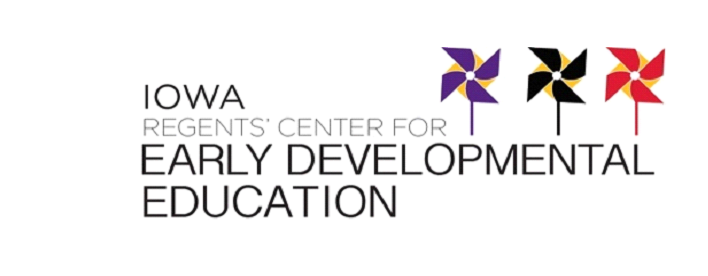High Card is a relatively simple game and can be played by children as young as 4 years of age as long as they understand the concepts of more and less with regard to numbers 1-10. Children are given the opportunity to compare numbers 1-10 and determine which is the greatest. When children first learn how to play High Card, it is best to limit the number of players to 2. This only requires children to compare 2 numbers. As they become adept to this, the number of players can be increased.
Recommended # of players: 2 - 4
Click here to download the game.
Standards Addressed
Head Start Standards
Social and Emotional Development
Social Relationships
- Communicates with familiar adults and accepts or requests guidance.
- Cooperates with others.
- Develops friendships with peers.
- Uses socially appropriate behavior with peers and adults, such as helping, sharing, and taking turns.
- Resolves conflict with peers alone and/or with adult intervention as appropriate.
- Recognizes and labels other's emotions.
- Expresses empathy and sympathy to peers.
- Recognizes how actions affect others and accepts consequences of one's actions.
Self-Concept & Self-Efficacy
- Demonstrates age-appropriate independence in a range of activities, routines, and tasks.
- Demonstrates age-appropriate independence in decision making regarding activities and materials.
Self-Regulation
- Recognizes and labels emotions.
- Handles impulses and behavior with minimal direction from adults.
- Follows simple rules, routines, and directions.
Emotional & Behavioral Health
- Expresses a range of emotions appropriately, such as excitement, happiness, sadness, and fear.
- Refrains from disruptive, aggressive, angry, or defiant behaviors.
Approaches to Learning
Initiative and Curiosity
- Demonstrates flexibility, imagination, and inventiveness in approaching tasks and activities.
- Demonstrates eagerness to learn about and discuss a range of topics, ideas, and tasks.
- Asks questions and seeks new information.
Persistence & Attentiveness
- Maintains interest in a project or activity until completed.
- Resists distractions, maintains attention, and continues the task at hand through frustration or challenges.
Cooperation
- Plans, initiates, and completes learning activities with peers.
- Joins in cooperative play with others and invites others to play.
- Models or teaches peers.
- Helps, shares, and cooperates in a group.
Logic and Reasoning
Reasoning & Problem Solving
- Classifies, compares, and contrasts objects, events, and experiences.
- Uses past knowledge to build new knowledge.
Language Development
Expressive Language
- Engages in communication and conversation with others.
- Uses language to express ideas and needs.
- Engages in conversations with peers and adults
Mathematics Knowledge and Skills
Number Concepts & Quantities
- Recognizes numbers and quantities in the everyday environment.
- Recites numbers in the correct order and understands that numbers come "before" or "after" one another.
- Uses one-to-one counting and subitizing (identifying the number of objects without counting) to determine quantity.
- Uses the number name of the last object counted to represent the number of objects in the set.
Number Relationships & Operations
- Uses a range of strategies, such as counting, subitizing, or matching, to compare quantity in two sets of objects and describes the comparison with terms, such as more, less, greater than, fewer, or equal to.
Measurement & Comparison
- Compares objects using attributes of length, weight and size (bigger, longer, taller, heavier).
Common Core Standards
Kindergarten
Know number names and the count sequence.
- K.CC.1. Count to 100 by ones and by tens.
- K.CC.2. Count forward beginning from a given number within the known sequence (instead of having to begin at 1).
Count to tell the number of objects.
- K.CC.4. Understand the relationship between numbers and quantities; connect counting to cardinality.
- When counting objects, say the number names in the standard order, pairing each object with one and only one number name and each number name with one and only one object.
- Understand that the last number name said tells the number of objects counted. The number of objects is the same regardless of their arrangement or the order in which they were counted.
- Understand that each successive number name refers to a quantity that is one larger.
Compare numbers
- K.CC.6. Identify whether the number of objects in one group is greater than, less than, or equal to the number of objects in another group, e.g., by using matching and counting strategies.
- K.CC.7. Compare two numbers between 1 and 10 presented as written numerals.
Operations and Algebraic Thinking
Understand addition as putting together and adding to, and understand subtraction as taking apart and taking from.
- K.OA.1. Represent addition and subtraction with objects, fingers, mental images, drawings, sounds (e.g., claps), acting out situations, verbal explanations, expressions, or equations.
- K.OA.5. Fluently add and subtract within 5.
Identify and describe shapes (squares, circles, triangles, rectangles, hexagons, cubes, cones, cylinders, and spheres).
- K.G.1. Describe objects in the environment using names of shapes, and describe the relative positions of these objects using terms such as above, below, beside, in front of, behind, and next to.

